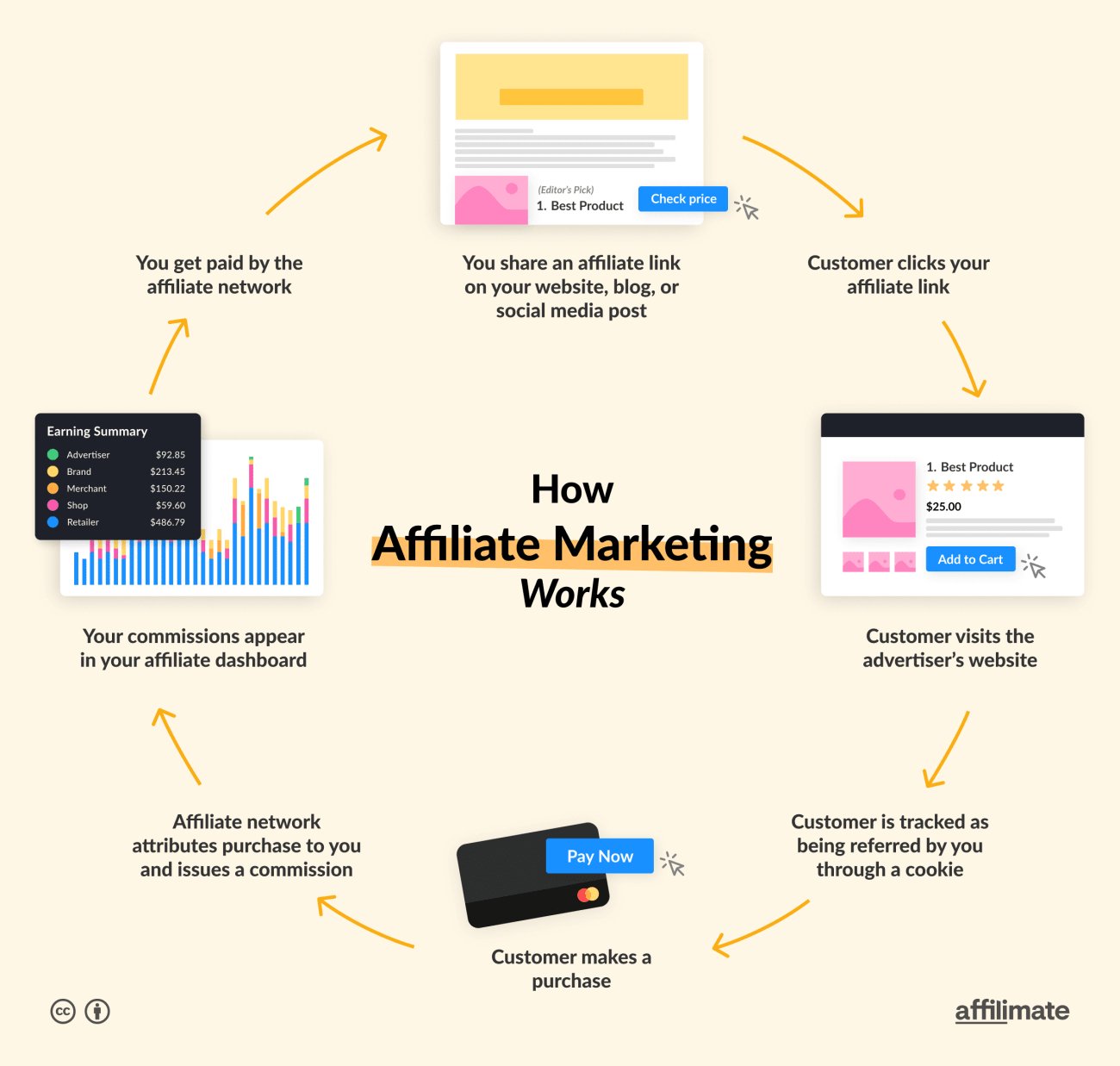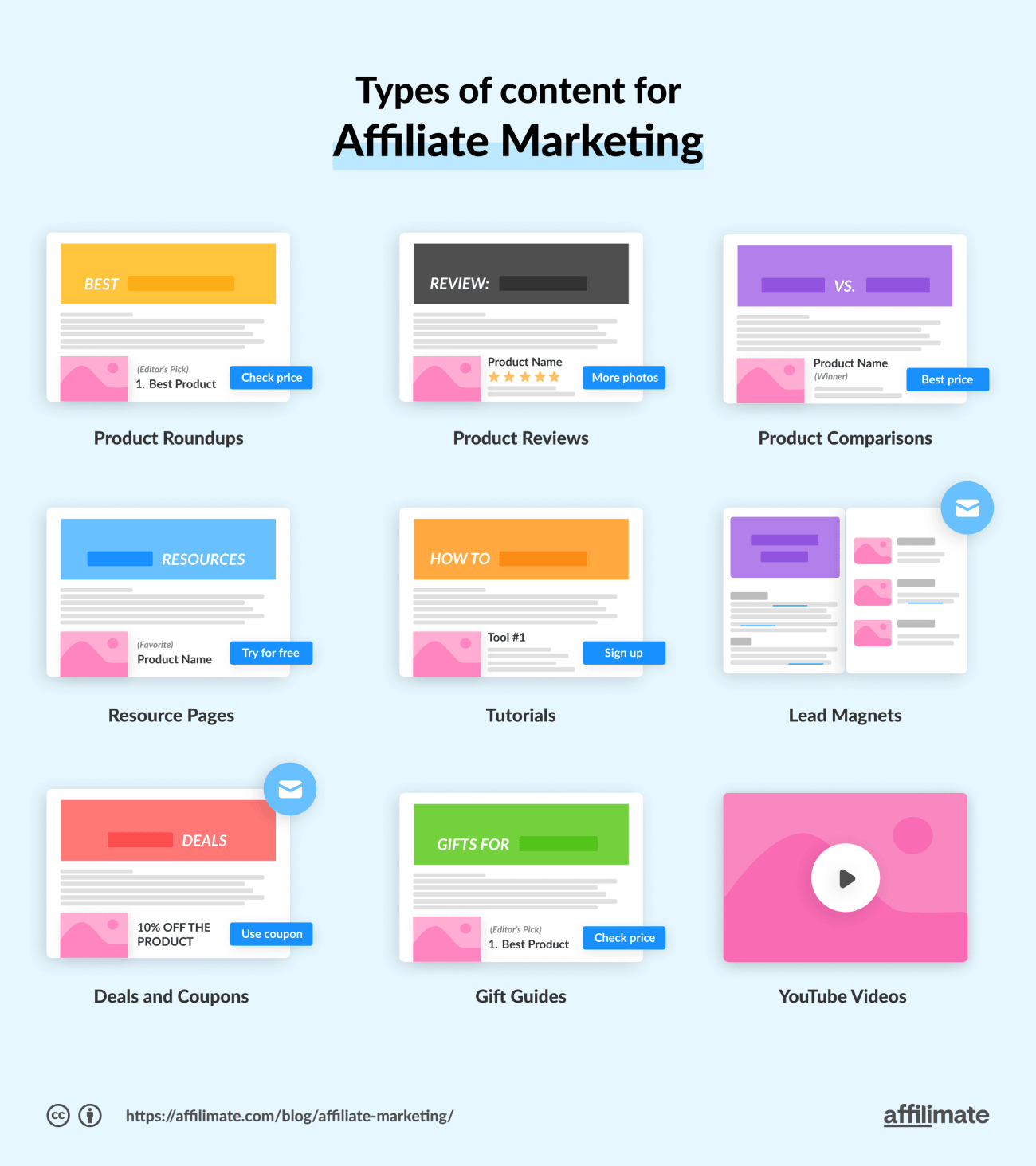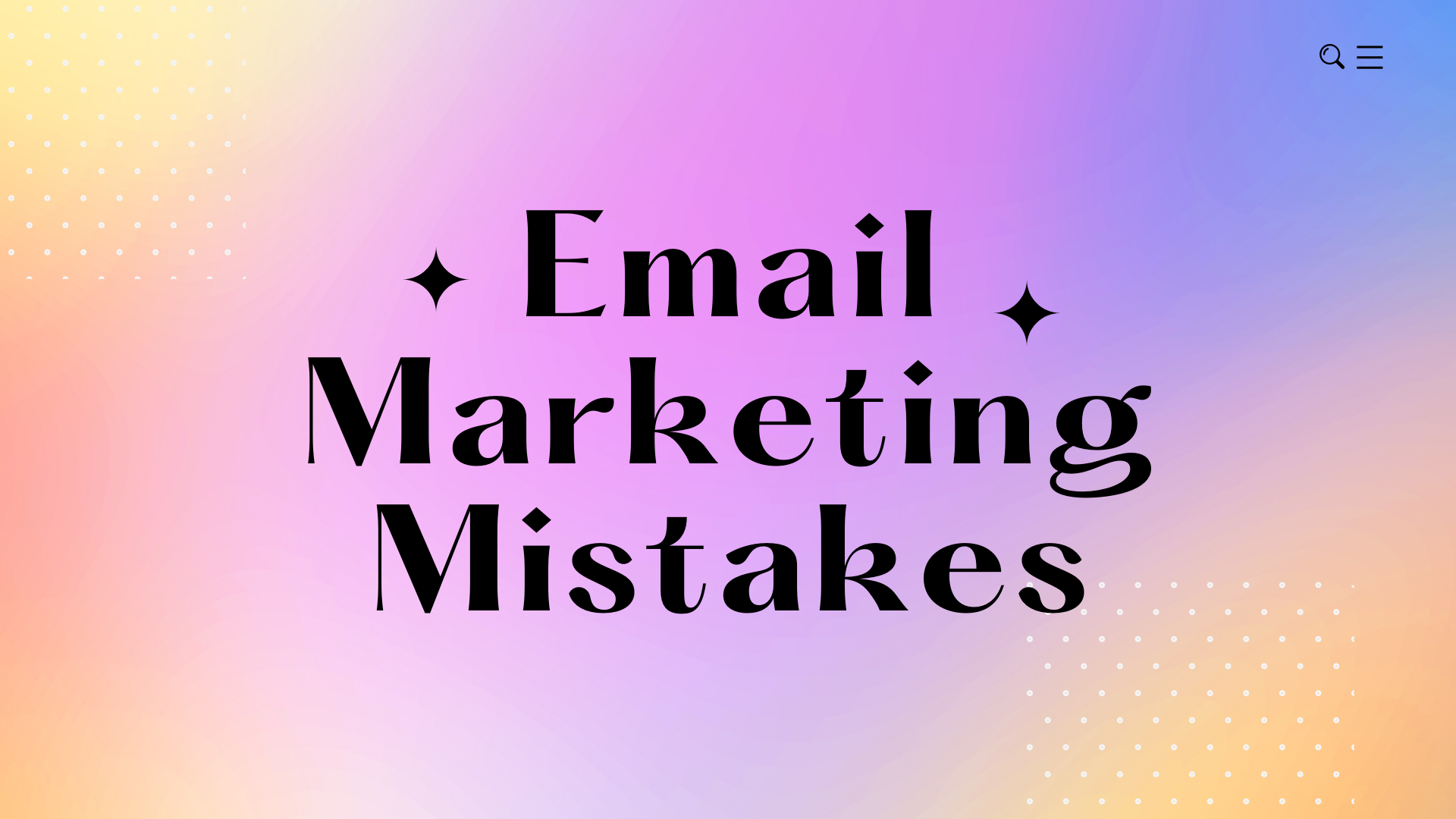Affiliate Marketing: How to earn money in idleness during industry 4.0
- Nov 07 2024
- 1 views

In an era where the e-commerce industry is gradually dominating people's lives, with influencers, KOLs, and KOCs,... everywhere, the term “Affiliate Marketing” has been familiar. Entrepreneur and philanthropist Warren Buffet once said, "If you don't find a way to make money while you sleep, you will have to work until death." Affiliate marketing is a type of marketing that helps you make money without sitting in front of a computer screen 24/24. It sounds magical, but it's doable! If you still can't believe it, keep scrolling down to figure out in detail about this fertilized business market!
1. What is affiliate marketing?
Affiliate marketing is a form of marketing where an individual/organization receives a commission when they sell the products of a company. Corporate parties—called affiliates—find brand partners to promote their products on social media accounts, blogs, or other platforms, earning a profit on each sale. The companies will then provide affiliate marketers with a unique link, known as an affiliate link. That way, they can track the affiliate's performance and reward them based on sales.
Here's an overview of how affiliate marketing works:

2. Why should we get involved in Affiliate Marketing?
Affiliate marketing is an attractive market and worth entering because of the following reasons:
- Low Risk: You don’t need to invest any cost to start joining an affiliate program
- Passive Income: You do not need to invest too much effort to profit from orders after you have added an affiliate link to your post.
- No customers support: You are not responsible for any complaints or requests from customers, instead, the sales business is.
- Flexible schedule: Instead of being confined to a fixed schedule, you can join affiliate marketing anytime, anywhere.
- Minimal business cost: You don't need to build a business, or a massive infrastructure to become an affiliate marketer. All you need is a laptop with an internet connection.
3. Types of affiliate marketing:
There are 3 main types of affiliate marketing tailored to each niche and resource available:
- Cost Per Action (CPA): Affiliate marketing CPA is similar to pay-per-lead affiliate marketing, but a commission is paid for a specific action that interacts with the brand, such as filling out a form or downloading an app. Affiliates only get paid if real customer interaction and action occur.
- Two tiers: In this type of affiliate marketing, marketers earn commissions not only on the sales they generate but also on the profits from other links they create and refer to the program. As a result, there are two potential payment layers.
- Influencer Marketing: Influencers are individuals with massive social media followings who promote products or services to their audience. In influencer marketing, influencers receive a commission from any sales made through their unique affiliate links. This is a type of affiliate marketing that has literally bloomed in recent times.
4. 8 steps to get started with affiliate marketing
Once you've mastered the basics of affiliate marketing, let's learn more about the process to get started in this market.
01. Choose a platform
You can run affiliate marketing on almost any platform or any social media channel. Currently, TikTok is the most popular choice thanks to the worldwide coverage of this social network, as well as the diversity of content about various industries. Instagram is also a popular option, but using a blog or YouTube channel tends to be the most effective. Instagram doesn't allow users to add links to posts (except for stories), making it harder to navigate people to the affiliate link.
Blogging: If you're interested in incorporating affiliate marketing into your marketing strategy, it's a good idea to create a blog because it's both simple and free. You can monetize your blog by indirectly attaching affiliate links to your articles, as a way of providing your readers with the information they need. For example, if your post is about baking, you could insert a link to a mart that sells ovens, or other kitchen appliances.
YouTube: Affiliate marketing is a proven method of making money on YouTube. If you choose this as your primary platform, you'll need to seamlessly incorporate branded products into your videos. Some YouTubers choose to create videos that focus on a specific product or brand, while others will showcase a variety of products under the same general theme. For example, Top 5 moisturizing cream products for sensitive skin; The skincare products I like the most of the cosmetic line “…”
Instagram: Instagram doesn't allow you to add links to posts, so the platform isn't very effective at converting customers for you. If you go this route, you’d better post product demos and include a link in your bio or Story.
Tiktok: Affiliate TikTok, also known as affiliate marketing on TikTok, is a form of marketing where content creators, KOC/KOL promote products/services for businesses through videos with engaging content. These content creators will attach a bio link on their TikTok channel and lead back to the website containing the product links they market.
Regardless of which platform you like best, you should post agency links on a variety of platforms so you can cross-promote your content and expand your reach. This will also help you understand which pieces of content work best for you, and help you optimize the performance of your ads.
02. Choose a niche based on research
During your niche research, you need to analyze the competitive context and learn about the affiliate programs available in your niche to create an affiliate marketing strategy and plan content in the long term.
If you're looking for ideas for your niche, there are plenty of useful research tools that will help you to come up with your idea.
- Google Trends: update trending topics and searches in all regions;
- Answer Socrates: Find out what questions people type on Google;
- Exploding Topics: A tool similar to Google Trends but the topics are carefully selected based on expertise.
You’d better look for niches with moderate competition so that you will have the opportunity to create unique value and grow further.
For example, instead of "web hosting" for everyone, you could start with a "beauty salon website builder" and focus on sharing knowledge with professionals in the beauty industry. If you could locate the right niche at the beginning, you can build a tight community around your brand and gain an edge in Google rankings.
03. Build your target audience
Whether you are a “Hot Instagram” or a million-view Youtuber, having a dedicated and loyal audience will help increase your affiliate clicks. Here are strategies that will help draw attention to your posts:
- SEO: Short for search engine optimization, SEO is the process of adjusting your content with the aim of helping it achieve good rankings on google as well as other search engines. When your blog post or YouTube channel appears at the top of search results, many users will click on the link and be directed to your website.
- PPC: (Pay-per-click) Another way to reach the top of search engines is to invest in pay-per-click (PPC) advertising.
- Email Marketing: If you have already collected user emails through your website newsletter subscription, send them Emails with the aim of directing them to your channel. You can also add affiliate links directly in your Email.
- Social Media Marketing: Run cross-promotions to help your channel achieve more exposure to your audience. You can promote your YouTube channel, blog, Instagram, and TikTok on other social media channels.
04. Find connections with brands
Once you've established a foundation and owned a certain following, it's time to seek affiliate marketing opportunities. There are two main ways you can find brands to promote:
- Join an affiliate program: The easiest way to connect with brands is to join an affiliate program. The biggest programs include Amazon Associates, CJ Affiliate, and ShareASale.
- Reach out to customers yourself: If you've targeted a particular brand or product line that you want to promote, reach out to those businesses yourself and propose. Emphasize to the brand how they could benefit from this partnership, clearly explaining why reaching your audience will bring them a source of potential customers.

05. Promote content to optimize links
All the previous steps will be meaningless if you do not optimize your content. Content creation for affiliate marketing is more than simply adding links to a few blog posts. You need to help customers make a decision to choose a product or service, with compelling advertising words.
Some examples of qualified affiliate marketing content include:
- Product Reviews: Nearly 97% of consumers study online reviews carefully before making a purchase, so product previews are a very popular form of content in the affiliate marketing industry.
- Product roundups: Roundups based on a specific theme or category lead different readers to relevant products and diversify your revenue away from a single link.
- Tutorial: The instructional content format helps highlight exactly how a product works in step-by-step detail. Customers are more likely to buy a product when they see exactly how it works.
- E-books: Big topics can't always be adequately covered by a blog post or an email. Instead, we need e-books for the purpose of sharing in-depth about a topic. You can use eBooks as a reward to convince customers to fill out their Emails.
06. Drive traffic to your affiliate site
It's time to drive traffic to your affiliate link. This can be done through social media platforms, SEO blog posts, and Email lists.
Social networking sites like Twitter, TikTok, Instagram, Pinterest, and Reddit are all free traffic sources for affiliate marketing, but it does take a little time and effort for them to work.
The most successful affiliate marketing programs also invest in increasing traffic through SEO. By targeting buyer intent keywords, you can reach customers with a clear purchasing intent, which helps to boost sales.
Another source of free traffic is email affiliate marketing. The special feature of Email is that the messages are sent directly to the inbox of potential customers. This helps them to gain top-notch knowledge of a product and decide to purchase faster.
07. Build an Affiliate Marketing Funnel
An affiliate marketing funnel is a carefully orchestrated process that navigates users from the start of their buying journey until they become loyal customers.
Marketing funnels are important if you need to attract an audience that isn't ready to buy and get them interested in your brand and offers. By using a funnel, the public will stick with you through all stages of the buyer's journey.
To be able to apply the marketing funnel, visit our article "Marketing funnel..." to have the most complete grasp of the definition as well as the process to build a funnel.
08. Track and increase your affiliate revenue
It's time to track and manage incoming sales. First, you need to prepare the basic elements for revenue tracking. There are two main ways of tracking:
- Track overall sales to see what products customers have purchased via your link.
- Track conversions coming from which pages, affiliate links, text, and visual elements.
You may need SubID tracking for the second case. SubIDs are additional data that you attach to your affiliate link, which ultimately gets recorded next to every conversion that results from that exact link.
For more information about SubIDs, read our guide on how to track SubIDs for affiliate marketing. It's a bit technical, but setting up SubIDs in the first place is a good move.
Once the monitoring and testing have been stabilized, run the test. The first step is to choose which blog post you want to run the test on. You should consider posts with high traffic, new traffic, or posts with high intent but low RPM (revenue per thousand visitors).
Once you've chosen the blog post, here are a few ideas to run tests on your marketing content:
- Adding comparison tables
- Switching the text on call-to-action buttons
- Inserting links to alternative affiliate products
- Decluttering by removing links that aren’t yielding any conversions
- Testing different link text
You can check which elements are driving conversions by using SubID. If you complete the steps above from scratch, you can be several steps ahead of most affiliate marketers today.
Conclusion:
It's not too surprising that around us, especially Gen Z, are laboriously building a TikTok channel, or youtube, ... and following the path of affiliate marketing. As the benefits mentioned above, this is an extremely idle form of making money because we can save capital costs as well as limit business risks. The participation process that Websass introduced above has been completely detailed, researched, and applied from practical experience. So you shouldn’t skip any of the steps for your affiliate project to work well.
Hopefully from this article, those who are starting to join the affiliate marketing industry will find their own appropriate direction. If you have any questions, please contact Websass, our Marketers team will be pleased to answer you!


